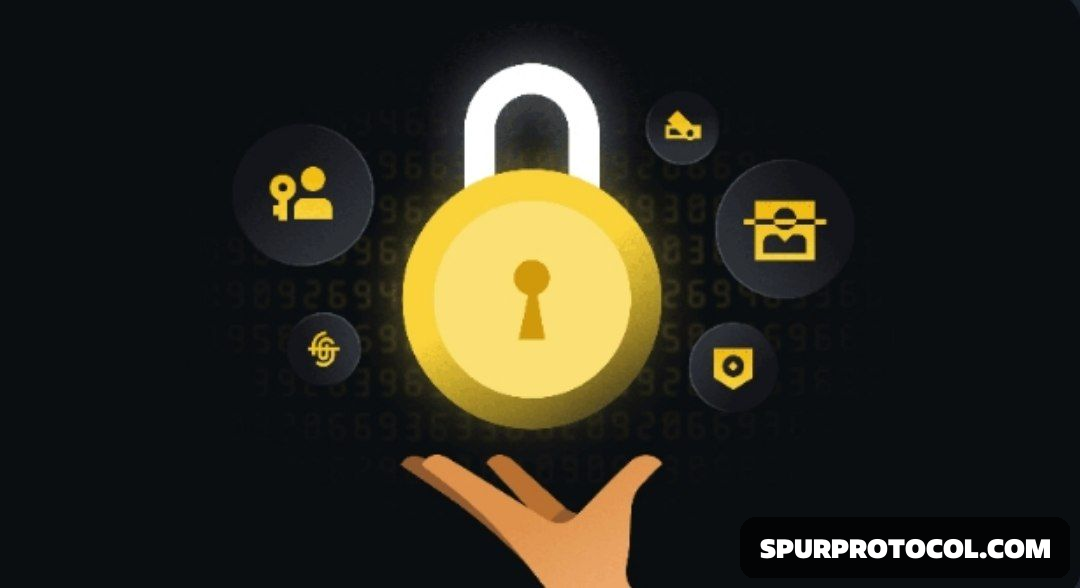Key Takeaways
1. Keep your seed phrase offline to safeguard against digital theft.
2. Be vigilant against spoofed influencer social media accounts by verifying profile authenticity.
3. Avoid accessing your crypto wallet or making transactions over public WiFi.
4. Be cautious of livestream videos promising crypto giveaways.
5. Check the channel's legitimacy and promotion style.
Be vigilant against AI-generated deepfake scams by paying attention to inconsistencies in video and audio.
As cryptocurrencies increasingly enter the mainstream, concerns about their security have become more pressing. Every year, cybercriminals steal staggering amounts of digital assets. Staying vigilant is key to protecting your cryptocurrency investments in this dynamic environment. This article will outline the top five security best practices to help you shield your digital assets from various threats.
How Can I Secure My Cryptocurrency Holdings?
To secure your crypto holdings, you must always be vigilant as to what scammers can do and be proactive with your protective measures.
Below are some steps you can take to secure your digital assets.
1. Secure Your Seed Phrase
Your seed phrase (also known as recovery phrase) is the gateway to your wallet and cryptocurrency holdings.
It's a sequence of 12 to 24 words that serves as your wallet master key in case you lose access to your wallet or need to migrate to a new device. Below are some tips on how to secure your seed phrase.
Store your seed phrase offline
The moment you get your seed phrase, avoid saving it in local folders or cloud storage. Storing the phrase online may expose it to potential hacks. The safest approach is to store them offline.
One way to do this is by investing in a hardware wallet that can generate your seed phrase and store it offline. Another option is to back up your seed phrase physically inside a vault or safe. You could use a paper backup, but it’s safer to use a metal plate with the seed phrase engraved.
Split your seed phrase
If you want to enhance the security of your seed phrase further, you may split it into multiple parts and store them in different secure locations. Keep copies of your seed phrase in various physical places, such as bank vaults, safety deposit boxes, or trusted individuals. Ideally, no one but you should have access to all parts of your seed phrase.
2. Beware of Social Media Account Spoofing
Social media platforms have become breeding grounds for cryptocurrency scams, with scammers creating fake accounts that closely mimic well-known exchanges or celebrities. Below is a reminder from the real Vitalik Buterin, warning users about the thousands of fake profiles out there pretending to be him.
Check for verification signs: Look for blue check marks or verification symbols on profiles. However, be aware that these can be faked or bought.
Check the handle: The handles are usually a giveaway for fake profiles. Savvy scammers will try to keep the names as similar to the original ones as possible. For example, “@Vita1ikButerin” instead of “@VitalikButerin”.
Scroll: Scroll through the profile and try to see some historical posts. This should give you an idea about the profile’s authenticity.
3. Avoid public WiFi
Public WiFi networks are notorious for lacking security and susceptibility to cyberattacks. Accessing your cryptocurrency wallet or conducting transactions while connected to public WiFi can put your assets at risk.
Evil twin attacks: Hackers set up malicious hotspots with trustworthy names (e.g., "Guest WiFi Hotel") to intercept your data when you connect.
Man-in-the-Middle (MitM) attacks: Malicious actors can intercept data transmitted between a WiFi router and a user's device, potentially accessing sensitive information like login credentials.
Password cracking attacks: Scammers use software to attempt numerous username and password combinations to unlock a router's management interface.
Evil twin attacks: Hackers set up malicious hotspots with trustworthy names (e.g., "Guest WiFi Hotel") to intercept your data when you connect.
Man-in-the-Middle (MitM) attacks: Malicious actors can intercept data transmitted between a WiFi router and a user's device, potentially accessing sensitive information like login credentials.
Password cracking attacks: Scammers use software to attempt numerous username and password combinations to unlock a router's management interface.
4. Watch out for fraudulent livestream videos
Scammers have turned to platforms like YouTube and Twitch to spread cryptocurrency fraud. Typically, scammers use stolen video content to run fake livestreams that promote fake giveaways. In some cases, they will use hacked YouTube accounts with millions of followers and try to convince users to join their giveaways by sending some cryptocurrency to specific addresses.
5. Beware of AI Deepfake Scams
Deepfake technology uses artificial intelligence (AI) to create fake videos that look real. It combines existing images and videos to make it seem like people are doing or saying things they never did. As you can imagine, scammers have started using deepfake to create highly intricate scams.
Hackers use deepfake to pose as someone else or pretend to be experts. Hackers often trick their victims with fake contests or investment opportunities, rushing them with deadlines.

